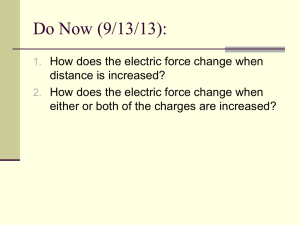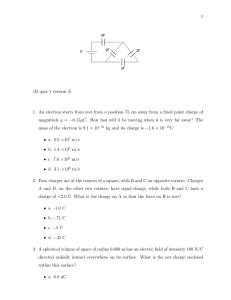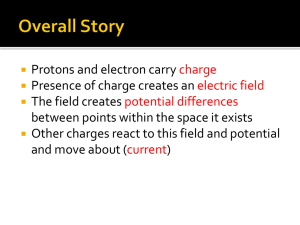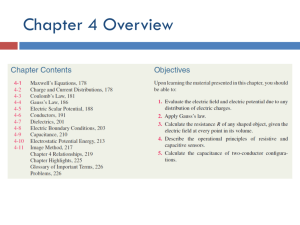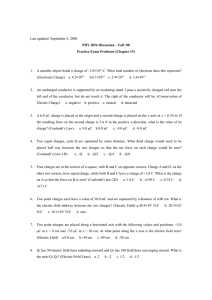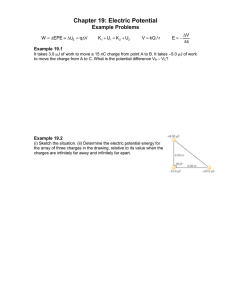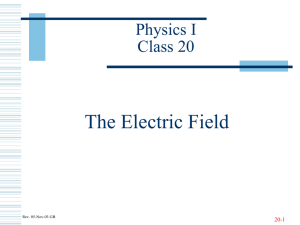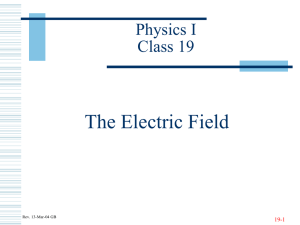A Form PHYSICS 1B QUIZ #1 FALL QUARTER 2009
advertisement
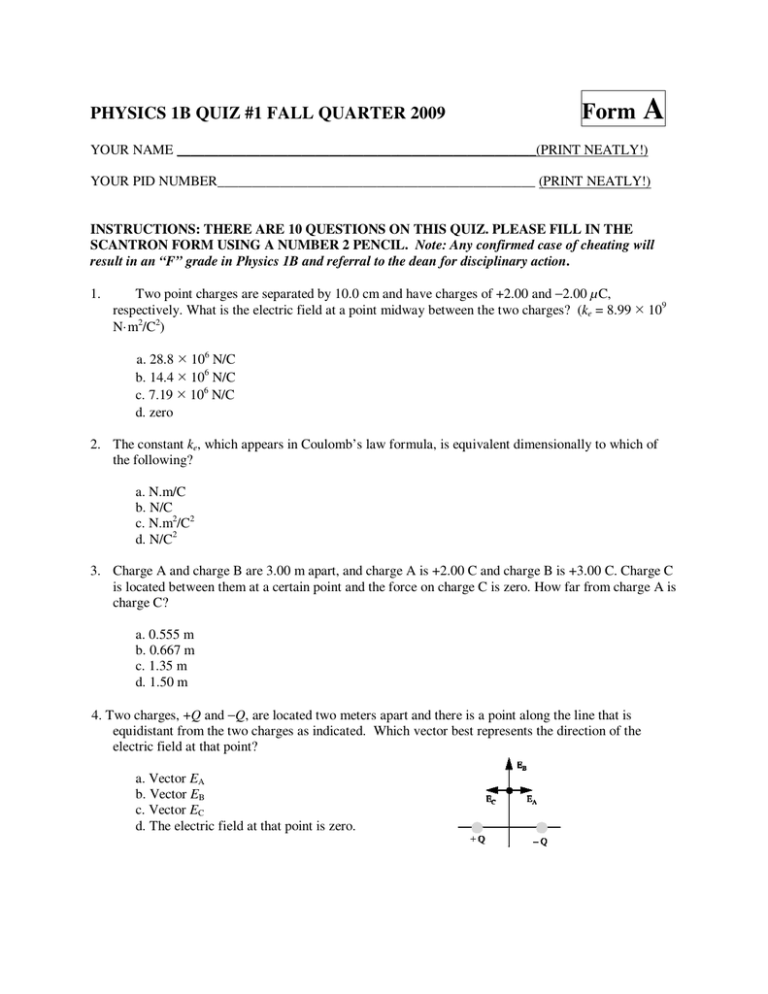
PHYSICS 1B QUIZ #1 FALL QUARTER 2009 Form A YOUR NAME ____________________________________________________(PRINT NEATLY!) YOUR PID NUMBER______________________________________________ (PRINT NEATLY!) INSTRUCTIONS: THERE ARE 10 QUESTIONS ON THIS QUIZ. PLEASE FILL IN THE SCANTRON FORM USING A NUMBER 2 PENCIL. Note: Any confirmed case of cheating will result in an “F” grade in Physics 1B and referral to the dean for disciplinary action. 1. Two point charges are separated by 10.0 cm and have charges of +2.00 and −2.00 µC, respectively. What is the electric field at a point midway between the two charges? (ke = 8.99 × 109 N·m2/C2) a. 28.8 × 106 N/C b. 14.4 × 106 N/C c. 7.19 × 106 N/C d. zero 2. The constant ke, which appears in Coulomb’s law formula, is equivalent dimensionally to which of the following? a. N.m/C b. N/C c. N.m2/C2 d. N/C2 3. Charge A and charge B are 3.00 m apart, and charge A is +2.00 C and charge B is +3.00 C. Charge C is located between them at a certain point and the force on charge C is zero. How far from charge A is charge C? a. 0.555 m b. 0.667 m c. 1.35 m d. 1.50 m 4. Two charges, +Q and −Q, are located two meters apart and there is a point along the line that is equidistant from the two charges as indicated. Which vector best represents the direction of the electric field at that point? a. Vector EA b. Vector EB c. Vector EC d. The electric field at that point is zero. 5. Four charges are at the corners of a square, with B and C on opposite corners. Charges A and D, on the other two corners, have equal charge, while both B and C have a charge of +1.0 C. What is the charge on A so that the force on B is zero? a. −1.0 C b. −0.50 C c. −0.35 C d. −0.71 C 6. If a conductor is in electrostatic equilibrium near an electrical charge: a. the total charge on the conductor must be zero. b. the electric field inside the conductor must be zero. c. any charges on the conductor must be uniformly distributed. d. the sum of all forces between the conductor and the charge must be zero. 7. An electron with a speed of 2.0 × 106 m/s moves into a uniform electric field of 500 N/C that is parallel to the electron’s motion. How long does it take to bring the electron to rest? (me = 9.11 ×10−31 kg, e = 1.6 × 10−19 C) a. 2.3 × 10−8 s b. 3.5 × 10−8 s c. 1.2 × 10−7 s d. 2.3 × 10−6 s 8. In xray machines, electrons are subjected to electric fields as great as 6.0 × 105 N/C. Find an electron’s acceleration in this field. (me = 9.11 × 10−31 kg, e = 1.6 × 10−19 C) a. 1.1 × 1017 m/s2 b. 5.4 × 1013 m/s2 c. 4.6 ⋅×1010 m/s2 d. 3.6 × 108 m/s2 9. A proton moving at 3.0 × 104 m/s is projected at an angle of 30° above a horizontal plane. If an electric field of 400 N/C is acting down, how long does it take the proton to return to the horizontal plane? (Hint: Ignore gravity. mproton = 1.67 × 10−27 kg, qproton = 1.6 × 10−19 C) a. 7.8 × 10−7 s b. 1.7 × 10−6 s c. 3.9 × 10−6 s d. 7.8 × 10−6 s 10. The electric field in a cathode ray tube is supposed to accelerate electrons from 0 to 1.60 × 107 m/s in a distance of 2.00 cm. What electric field is required? (me = 9.11 × 10−31 kg and e = 1.60 × 10−19 C) a. 9 110 N/C b. 18 200 N/C c. 36 400 N/C d. 72 800 N/C
